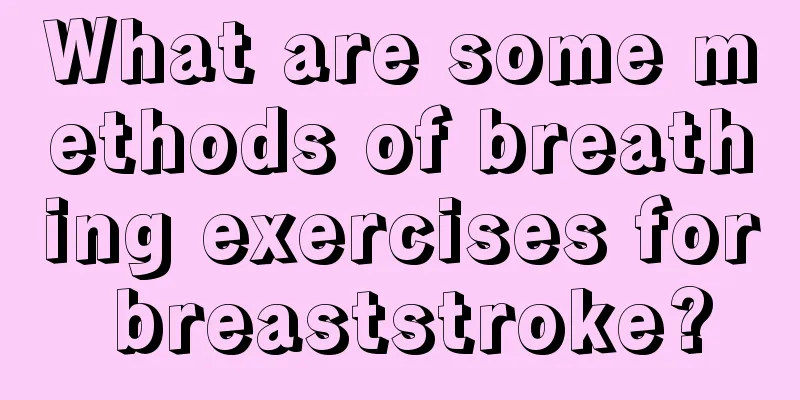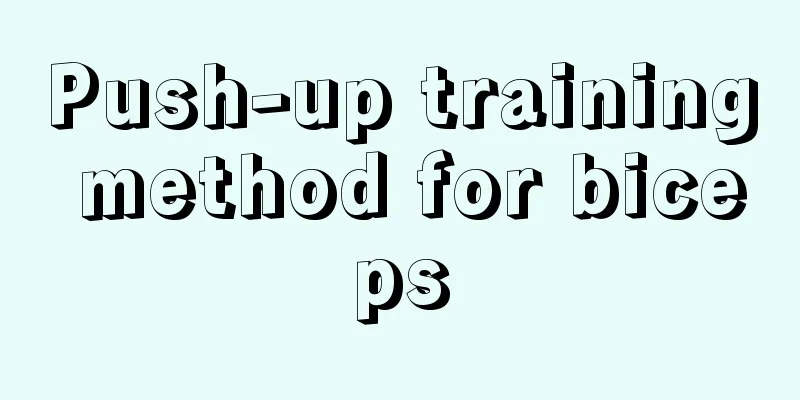What are some methods of breathing exercises for breaststroke?

|
Summer is here, and the place many people like to go is the swimming pool. Both adults and children like to swim a few laps in the water. Those who can't swim will also choose to cool down in the water. Well, since we are already in the water, why not learn how to swim at the same time. The simplest way to swim is breaststroke, and the most important part of breaststroke is the breathing method. Today I will introduce to you the exhalation breathing method of breaststroke. Stifling in water Hold the edge of the pool, your partner's or your coach's hand and squat down with your head submerged in the water to practice holding your breath. After a while, stand up and then practice walking on your own without protection. The longer you hold your temper, the better. If you feel any discomfort in your head, you should stop practicing to avoid any injury. Chest tightness is caused by pressure in the water. Count down. When the trainees cannot bear it anymore on land, they will make a “pop” sound and inhale through their mouth to adjust their breathing. The number of seconds counted by the trainees will be used in the water. After entering the water, please open your eyes and do not hold your breath. Exhaling in water Squat down with your hands on the pool wall or your companion's hand, submerge your head in the water, slowly exhale through your mouth (nose), and slowly stand up after a while. The longer you exhale in the water, the better. Be careful not to exhale intermittently (which can easily cause choking), but rather exhale gradually. Breathe in through your mouth and apply force to your abdomen. Rhythmic Breathing What is rhythmic breathing? We can explain it as "regular, rhythmic breathing". Basically, it is similar to the exhaling in water mentioned above: exhale through the mouth (nose) in the water, and there will be a "pop" sound at the corners of the mouth when you come out of the water, and then inhale through the mouth. In addition to paying attention to the rhythm, you can coordinate with the action of pressing the water with both hands. In teaching young children, because they often imagine that they cannot stand at the bottom of the pool, the guidance of rhythmic breathing is even more important. Coaches can regard breathing as the beginning of ventilation. (Coordination movements: 1. Stretch your hands together, sink down and exhale 2. Press your hands flat to both sides to let your head rise and inhale). These methods seem simple, but they are not easy to do. Therefore, whether adults or children, they must learn under the guidance of professionals and pay attention to underwater safety. Never go into the water alone when there is no one else in the swimming pool, and be sure to be well prepared before going into the water to avoid accidents such as cramps underwater. |
<<: Is spinning bike effective for weight loss?
>>: What are some yoga poses that help you sleep?
Recommend
What are the arm muscle exercises?
People often want to train the size and strength ...
Yoga for Weight Loss
Many people are worried that if they practice yog...
Can hula hooping help you lose weight?
Hula hooping is a common daily exercise. We often...
How to test the biceps tendon reflex
The biceps tendon reflex is a method to detect wh...
Is playing basketball effective for weight loss?
Some people who want to lose weight, after doing ...
Is it okay to use a treadmill for running?
Now more and more people are buying treadmills. E...
How to reduce back fat effectively?
When watching TV, you will see that some people&#...
What are the hip strength training
For some friends, in order to make their buttocks...
What are the principles of sports training?
There are many principles of sports training, whi...
How to build muscle
With the continuous improvement and change of lif...
What brand of running shoes is good? How to choose running shoes?
Which brand of running shoes is good? It is very ...
How to train the inverted deltoid muscle
How to train the inverted deltoid muscle well? Th...
A secret exercise method to add passion to your life, you must have it
Just like waist strengthening exercises in the gy...
The importance of exercise for high blood pressure
There is a saying: "When you are young, exch...
Is Tai Chi considered an aerobic exercise?
Life lies in exercise. Nowadays, many white-colla...









